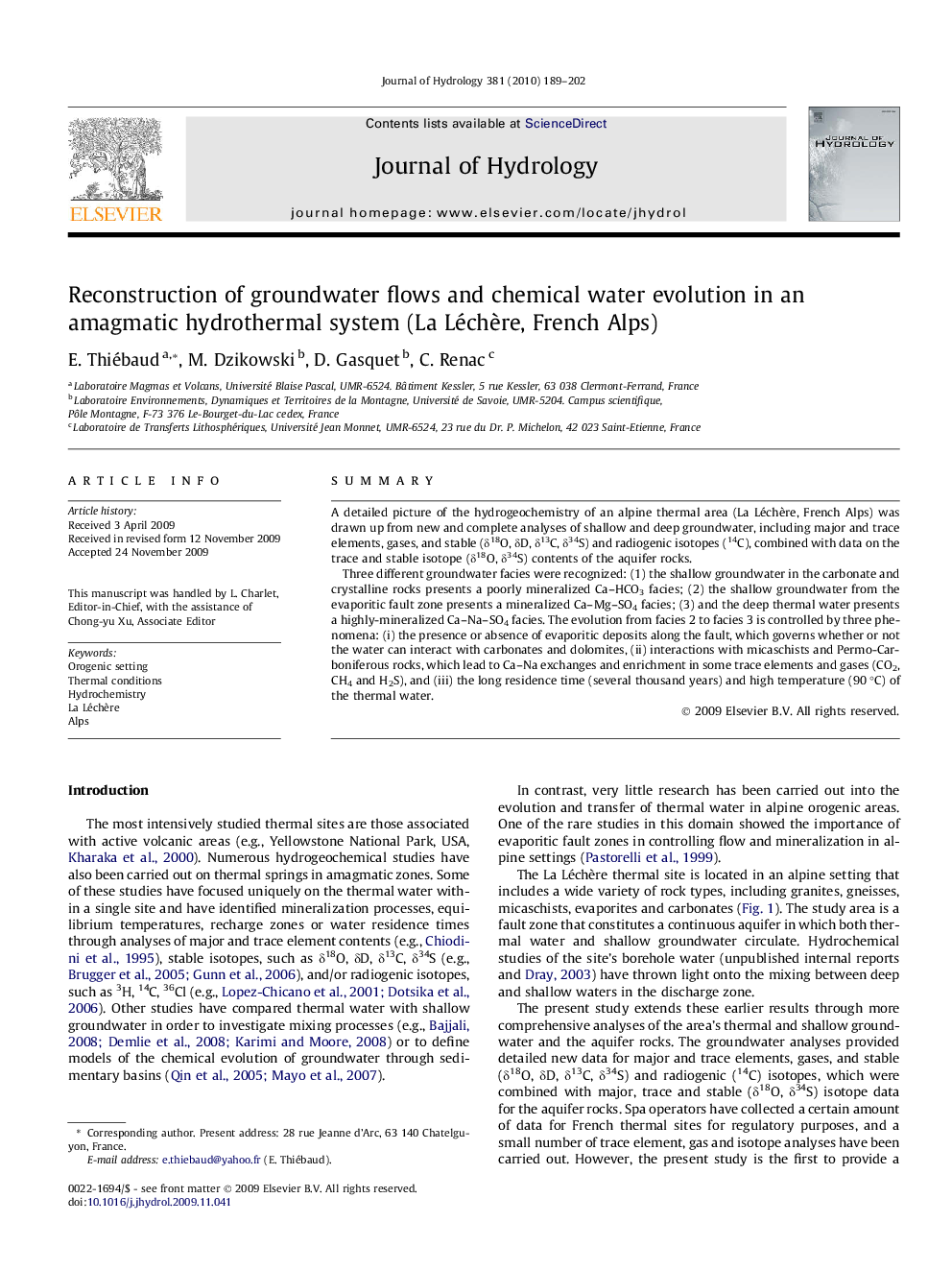| Article ID | Journal | Published Year | Pages | File Type |
|---|---|---|---|---|
| 4578246 | Journal of Hydrology | 2010 | 14 Pages |
SummaryA detailed picture of the hydrogeochemistry of an alpine thermal area (La Léchère, French Alps) was drawn up from new and complete analyses of shallow and deep groundwater, including major and trace elements, gases, and stable (δ18O, δD, δ13C, δ34S) and radiogenic isotopes (14C), combined with data on the trace and stable isotope (δ18O, δ34S) contents of the aquifer rocks.Three different groundwater facies were recognized: (1) the shallow groundwater in the carbonate and crystalline rocks presents a poorly mineralized Ca–HCO3 facies; (2) the shallow groundwater from the evaporitic fault zone presents a mineralized Ca–Mg–SO4 facies; (3) and the deep thermal water presents a highly-mineralized Ca–Na–SO4 facies. The evolution from facies 2 to facies 3 is controlled by three phenomena: (i) the presence or absence of evaporitic deposits along the fault, which governs whether or not the water can interact with carbonates and dolomites, (ii) interactions with micaschists and Permo-Carboniferous rocks, which lead to Ca–Na exchanges and enrichment in some trace elements and gases (CO2, CH4 and H2S), and (iii) the long residence time (several thousand years) and high temperature (90 °C) of the thermal water.
